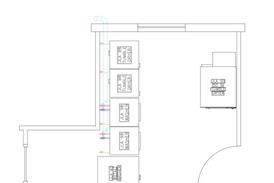It seems that hardly a day goes by without another move by the major oil companies to leave behind their traditional role of forecourt retailing, with or without divesting themselves of some real estate at the same time. While in some quarters this is seen as an extremely good thing, and creates opportunities for enterprising retailers to expand their operations, as accountants and business advisors we sometimes have to play ’party pooper’ and remind potential operators of a few of the harsh realities and risks involved in sudden changes to their business. So here, in no particular order, are a few things to consider when that ’once in a lifetime offer’ arrives in the post.
WHAT’S ON OFFER
Remember that oil companies rarely offer a prime piece of real estate for disposal without first having considered the costs and benefits of retaining it themselves. Yes, some of the majors have adopted a declared policy of not holding any retail sites at all, but most of the others have tended to retain their ’best’ sites. So exactly what offer are you looking at?
A FEW PROPERTY QUESTIONS
Most of the forecourts in which you might be interested have been around for years. So that’s plenty of time for some interesting ’legal’ issues to have arisen - most obvious of which is the question of environmental contamination. What exactly is lurking underground and who will be responsible when it has to be cleaned up?
Would-be owners often forget that the clean-up may not just be a question for after the site eventually closes - any proposed redevelopment or expansion of existing facilities is likely to involve some degree of clean-up. That leads to the next consideration - just what planning constraints or covenants are in place? Then there’s the potential problem of access and rights of way. These are just a few of the questions that you should be asking an before signing for the finance.
THE MONEY QUESTIONS
Then there’s the cost and the big question of how much you need to spend to get the business up and running. Well of course that depends on the cost of what you’re buying and how much working capital you’ll need to run it. It is possible to arrange quite large capital loans from commercial lenders, since they will secure those on the property value itself. However that’s only part of the story - the crucial bit is then how much cash will the business generate (or consume) and how will you fund that?
That question can’t be answered without some understanding of the fuel ’tie’ that’s going to be involved as part of the sale. If you’re buying free of tie or for non-fuel use, then that will be of no interest to you, but in most cases you’ll be buying the business as a going concern, and that’ll probably include a minimum supply agreement. In today’s market there’s no point in expecting a ’guaranteed’ margin - your effective fuel margins will be based on some form of reference to Platts pricing. Misunderstand the terms and grief will follow.
The answer is to prepare a proper cash flow forecast because without one you’ll just be guessing how much cash you’ll really need and when it’ll be most stretched. Just as you’ll be guessing whether the business is actually viable in the first place. That could be a rather expensive gamble if you’re borrowing £500,000 or more and lenders expect you to put in a large chunk of your own cash to actually fund the business operations. Producing a business plan or cashflow forecast requires some detailed knowledge of the industry in general and some even more detailed understanding of the site’s trading history and costs.
THE PRACTICALITIES OF ’EXPANSION’
We believe that most would-be multi-site operators seriously underestimate the amount of additional clerical work involved when taking on extra outlets. Lack of space precludes much more than this brief overview. However, if you are thinking about expanding, to minimise the risks as well as maximising the opportunities, please don’t hesitate to contact us for an informal chat.
























No comments yet